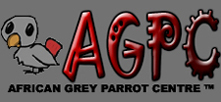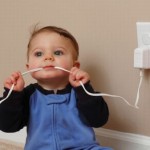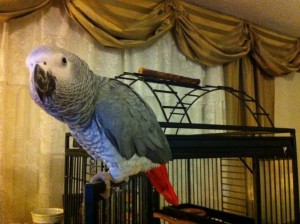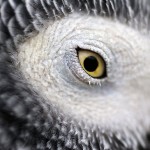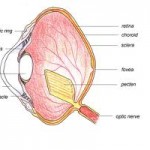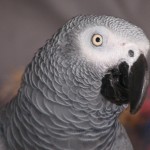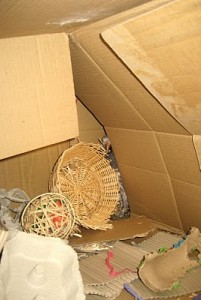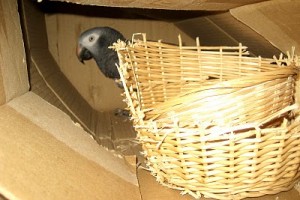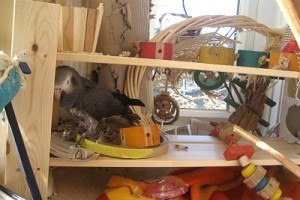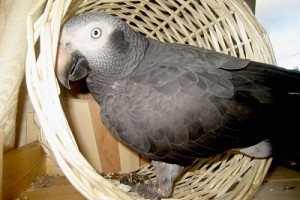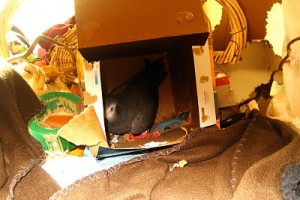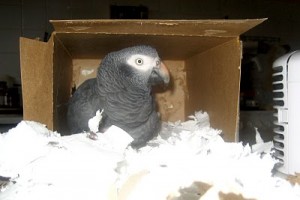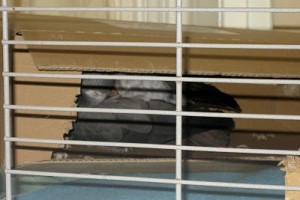1. Water
Water can be a big hazard also such as an open toilet, washing up bowl/sink, saucepan full of food/water, bath tubs, fish tanks…An African grey that is allowed to fly around the house could easily fall into any of these and can drown as they can not swim treat them as a toddler and keep all hazards out of the way so they don’t get hurt or die.
2. Household Plants
Household plants can also be very toxic to your African Grey that are found about the house these include Daffodil and Iris bulbs ,Poison ivy, Dieffenbachia, Tulip, Philodendron, Sanseveria (or Mother-in-law-tongue),Christmas cactus, Poinsettia, Oleander a couple to look out for around Christmas that you may bring into your home are Holly berries and Mistletoe. Safe plants that are very common in the house are Spider plants also most ferns are safe for parrots, best rule to follow is if your unsure do not let your parrot near the plant better to be safe than sorry! .This is just a very small list of toxic and safe plants and you will find many more on the lists.
3. Chemical Pesticides / Insecticides
Chemical pesticides / Insecticides such as Flea Bombs, Fertilizers, Fungicides. Cleaning solvents, Aerosol Sprays of any kind, Air Fresheners, Carpet Fresheners, Oven Cleaners, Furniture Polish, Tub & Tile Cleaners, Cleaning Supplies, Bleach and Ammonia fumes, Oil-based Paint and paint product fumes If you are re-painting a room make sure you take the parrot out of the room and don’t bring them back in until the room has been aired and the smell of the fumes has gone completely. The same applies to Spray-on Deodorants, Hair Spray, Perfumes/aftershaves, do not have your parrot in the bathroom if you are spraying any product and anything that gives off fumes can cause problems for your parrot and sometimes can even kill your parrot so keep everything away from your parrot and keep rooms well aired that you are using sprays or bleach in and your parrot as far away as possible.
4. Cigarette, Cigar, and Pipe Smoke
Cigarette, Cigar, and Pipe smoke, Marijuana smoke, Nicotine on hands and clothing, any smoke and fumes can be dangerous to parrots. If you have Nicotine on hands this can cause contact dermatitis, especially foot problems which would get the most contact with the nicotine on your clothes/hands also Ingesting tobacco products or Marijuana can make birds sick so if you have to smoke makes sure you do it outside or in a well ventilated room as far away from the parrot as possible.
5. Plug-in Air Fresheners
Plug-in Air Fresheners can be toxic to your parrot as they give off vapours from the oils which can be toxic to your parrot or even fatal Scented Candles, Incense, Potpourri also have the same effect and best avoided.
6. Burning rubber or Plastic
Burning rubber or plastic and non-stick cooking utensils are all dangerous to parrots as they give off deadly fumes.
7. Non Stick Pans
Non stick pans like Teflon T-fall and other non-stick coating used in Cookware, Bread Makers, Stove Drip Pans, Irons, Ironing Board Covers and other household appliances like hair dryers, irons/curlers all become deadly to parrots when the get over heated as they can give off fumes which are toxic and can be fatal to birds. You best to stick to the normal non stick cookware might mean a little more work cleaning them but much safer for your feathered friend.
8. Electrical Cords
Electrical cords need to be away from parrots as they love to chew everything in there reach and a cable is just as much fun as one of there toys in your parrots cage, they can kill your bird if it chews the cable so best kept away from them.
9. Other Pets In The House
Other pets in the house such as Cat?s and Dogs should be watched with your parrot and NOT left alone with your parrot at any time as they could cause your parrot serious injury or even death.
10. Windows / Patio Doors
Windows, patio doors are dangerous in two ways your parrot could fly into them and do themselves serious injury and it can even be fatal as they do not see them and think they can fly through them, also if they are left open your parrot can fly away and be at all sorts of danger from the big outside world, i lost my family pet grey Reggie this way but was very lucky to have him returned by a very honest lady who lived 25 miles away! Keep windows and doors closed or your parrot away when they are open.
Above are just some of the things i can think of that may help you, but that is no way a full complete list and should only be referred to as a small guide to dangerous items, you will find many more in books and on websites, you should always have to hand the number of a local Avian vet to you and directions on how to get there and a small towel, a pet carrier to take your parrot there in should you have to rush your bird to the vets, having these to hand means you can get there much quicker.
About the Author
Written by Paula Dansie of the African Grey Parrot Centre ™
This article may be duplicated in its full state but the above link must be retained, if this article is found duplicated anywhere on the web without the link preserved then legal action will be taken and your ISP will be contacted.
